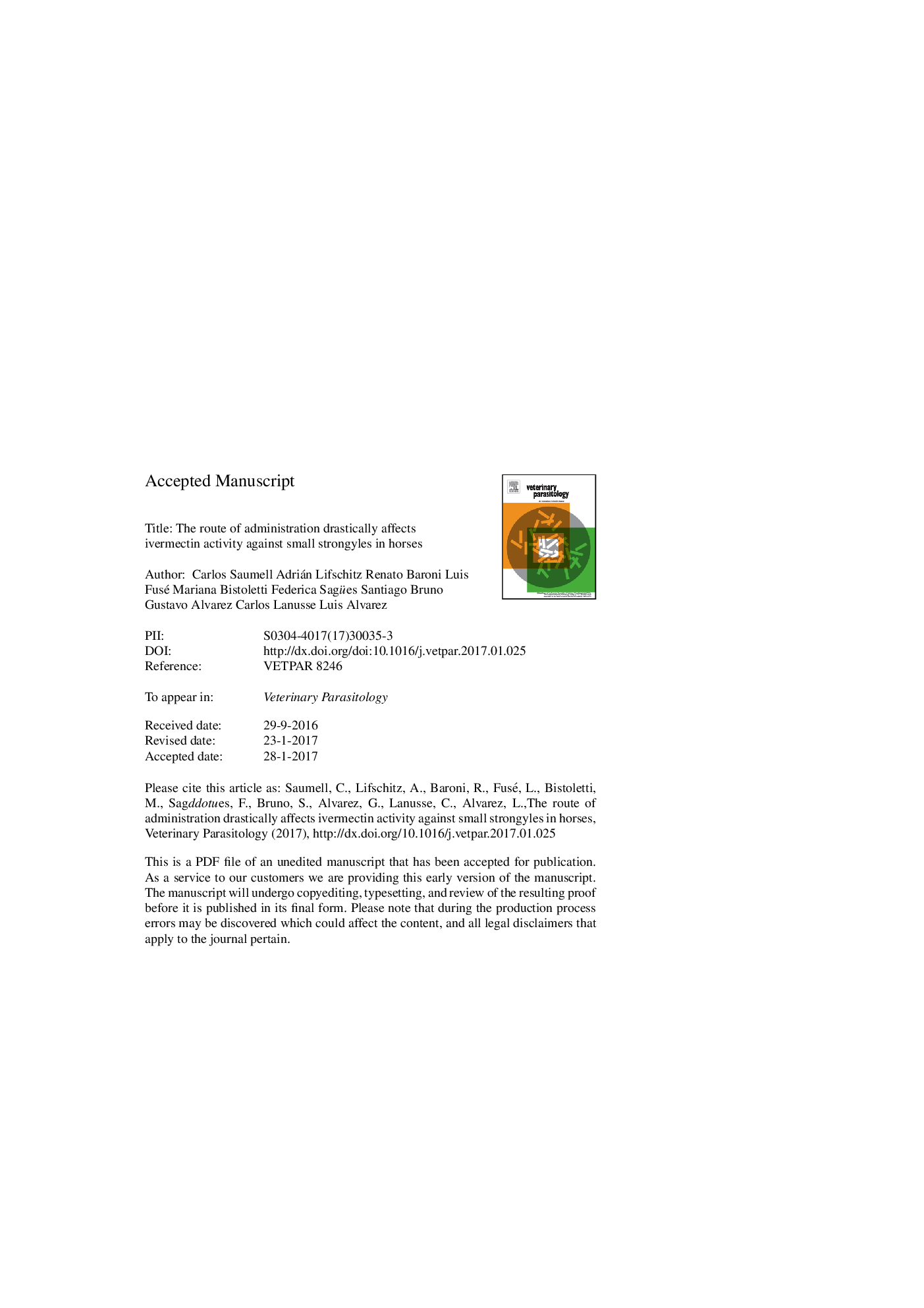| Article ID | Journal | Published Year | Pages | File Type |
|---|---|---|---|---|
| 5545828 | Veterinary Parasitology | 2017 | 28 Pages |
Abstract
The goal of the current study was to evaluate the comparative efficacy of ivermectin (IVM) against small strongyles (cyathostomins) following its oral and intramuscular (IM) administration, in naturally parasitized horses. The parasitological data were complemented with the assessment of the plasma disposition kinetics of IVM. The trial included two different experiments. In experiment I, 40 horses naturally infected with small strongyles were randomly allocated into four experimental groups (n = 10) and treated with IVM (0.2 mg/kg) as follows: IVM oral paste, animals were orally treated with Eqvalan® (IVM 1.87% paste, as the reference formulation) by the oral route; IVM oral solution, animals were orally treated with Remonta® (IVM 2% solution, as a test formulation); IVM IM solution, animals were IM treated with the test product (Remonta® IVM 2% solution); and control, animals were kept without treatment as untreated controls. In experiment II, 24 horses naturally parasitized with small strongyles were randomly allocated into the same four experimental groups (n = 6) described for experiment I. Faecal samples were individually collected directly from the rectum of each horse prior (day â1) and at 7 and 15 (Experiment I) or 7, 15 and 21 (Experiment II) days after-treatment, to assess the eggs per gram (epg) counts and estimate the efficacy of the treatments. Additionally, the comparative plasma disposition kinetics of IVM in treated animals was assessed in experiment II. In both experiments, an excellent (100%) IVM efficacy was observed after its oral administration (test and reference formulations). However, the IM administration of IVM resulted in a low efficacy (36-64%). Similar IVM plasma concentration was observed after its oral administration as a paste or as a solution. The higher IVM plasma profiles observed after the IM administration accounted for an enhanced systemic availability. The improved IVM efficacy observed against adult cyathostomins after its oral administration can be explained by an enhanced drug exposure of the worms located at the lumen of the large intestine. These findings may have a direct impact on the practical use of macrocyclic lactones in horses.
Related Topics
Life Sciences
Agricultural and Biological Sciences
Animal Science and Zoology
Authors
Carlos Saumell, Adrián Lifschitz, Renato Baroni, Luis Fusé, Mariana Bistoletti, Federica Sagües, Santiago Bruno, Gustavo Alvarez, Carlos Lanusse, Luis Alvarez,
